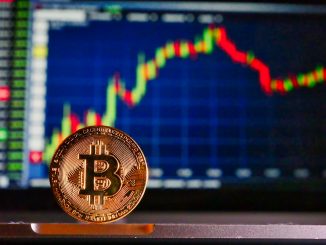In my last post, I argued that the fair price of a bitcoin as a monetary instrument is zero BTC; a bitcoin contains no promise in terms of income, in terms of convertibility, in terms of maturity, or any other. As a commodity, I have no idea what its fair price is. BOA says it is $1300. I will let those who find utility in the bitcoin payment system and speculators decide how much they are willing to pay in USD for a number credited on their screen in BTC. All I can tell you is: “money does not grow on trees.” Money is not a natural occurrence, it is a man-made financial devise. It looks like the bitcoin creator’s views on money were shaped by the old and erroneous idea that “gold is money.” Gold was at best a collateral embedded in a monetary instrument (gold coin), the metal itself was never money. In today’s blog, I will focus on three other issues with the bitcoin system that prevent it to work well as a monetary system. While I explain what ought to happen to make the bitcoins work properly as a monetary instrument, I am not sure it can be done.
1- The supply of bitcoins is inelastic
If a monetary instrument works properly, its supply changes with the quantity demanded. It goes up when there is more demand for it, and down when there is less demand for it. Think of bank accounts. When people need more funds for transactions they can apply for a bank advance. When people are bearish about the future, they can repay their bank advances and the outstanding amount bank accounts declines. The same is true for government currency via the automatic stabilizers of fiscal policy, the central bank clearing and settlement mechanisms, and the lender of last resort. When the economy is doing poorly, government spending rises automatically and tax revenues decline, and the central bank may help by providing reserves on demand to banks to maintain their liquidity. When the economy is doing well and people can rely on banks to sustain their financial needs, non-discretionary government spending declines, tax revenues rise (given tax rate, i.e. no increase in tax burden), and central-bank advances to banks are repaid.
The bitcoin supply is fixed in terms of flow (BTC 25 per 10 minutes now) and in terms of maximum outstanding amount (BTC 21 millions). It cannot be increased in function of the demand for bitcoins. In addition, it is not redeemable (either through conversion or by handing it back to the issuer), i.e. it cannot be decreased in function of the demand for bitcoins.
If it were possible to change the injection and destruction mechanisms to make the bitcoin supply perfectly elastic, they could easily be created and destroyed at will. Bitcoins can be created out of thin air. This is a great quality but as the saying goes “with great power comes great responsibility.” The fact that bitcoins can be created at will only means that there is no need to care about “running out of money;” this takes care of the financial side of economic problems in terms of availability of funds (a central point of MMT). However, easiness of creation does not mean one should not be careful with the way bitcoins are injected (that is another central point of MMT). Banks must perform underwriting (we saw what happens when they do not). Government have budgetary procedures. The supply of bitcoin is provided arbitrarily.
2- The supply of bitcoin is arbitrary
The reward structure of miners is not based on the difficulty of solving the problem. Why are miners paid BTC 25 now? Why did they get a pay cut from BTC50 to BTC 25 and why will pay cuts continue? I have no idea. The consequence is that the maximum amount of bitcoin will be reached in in 2140. Why aiming for 2140? I have no idea. It does not make any economic sense.
In addition, the supply of bitcoin is based on a bonanza, think lottery winnings, rather than the needs of the payment system for more bitcoins. That does not promote a smoothly working of the payment system.
3- There is no deposit insurance, no lender of last resort, and fraud does occur and it is difficult to offset its consequences.
The payment system is subject to frauds in terms of accounting frauds (here and here), in terms of ponzi schemes, and in terms of thefts (here). Recently the following occurred: “The largest Bitcoin payment processor in Europe, BIPS, said last month that it was hacked and that it lost about $1 million worth of Bitcoins, including coins that were in the personal online wallets of customers. The company, which is still in business, said this week that it would be “unable to reimburse Bitcoins lost unless the stolen coins are retrieved.” (here).
If one compares the traditional payment system with the bitcoin payment system on equal footings (i.e. no regulation), are frauds and thefts more prone in the traditional payment system? I.e. is the bitcoin payment system intrinsically safer? I cannot tell you. Accounting fraud seems pretty hard to do but is not impossible, others seem more feasible.
The main point here is that you are on your own when you enter this payment system. The price of bitcoins will drop dramatically in the future. Why and when this will happen is anybody’s guess and is irrelevant. All that is known is that the structure of the system is flawed and needs to change (you do not ask your mechanic when your brakes will fail if he tells you they need to be changed). For example, the value of bitcoins may drop dramatically in terms of USD as people figure out that their savings in BTC is no as safe as they thought, and as they try to leave the bitcoin system all at once. In that case, their savings valued in USD would decline dramatically.
At the moment I do not see the need for a deposit insurance and lender of last resort. Debt-deflations are not possible in the bitcoin system for now because there is no debt written in BTC. The risk of contagion is also small given the limited size of this payment system. There can be a deflation (“bubble popping”) but not a debt-deflation. This, of course, assumes that no BTC-debt exists. I do not know for sure. We have had the shadow banking system, now we have shadow payment systems (Bitcoin and others) that financial professionals seem to enjoy using (see comment in my previous post).
- Bulenox: Get 45% to 91% OFF ... Use Discount Code: UNO
- Risk Our Money Not Yours | Get 50% to 90% OFF ... Use Discount Code: MMBVBKSM
Disclaimer: This page contains affiliate links. If you choose to make a purchase after clicking a link, we may receive a commission at no additional cost to you. Thank you for your support!





Eric Tymoigne, your article is full of mistakes and false facts. You are part of the reason why people do not understand bitcoin because you are reporting on something you clearly do not know anything about.
Let us start with point number one
1) “The supply of bitcoin is provided arbitrarily.” No, the supply of bitcoin is controlled by a complex algorithm known as SHA-256, which is used twice in producing new bitcoins. The supply of bitcoin cannot be changed because that is not the way it was built. If someone does try to change it, the network will reject the “false bitcoins” and the coins will disappear as soon as they appeared. If you tried to spend these coins, they would not be accepted. The whole point of the system is that they cannot be created without processing this algorithm. Which now requires immense computing power. The difficulty in mining changes the more people and power are on the network.
2) “Why did they get a pay cut from BTC50 to BTC 25 and why will pay cuts continue? ” If people were receiving 50 BTC to this day, that would be equivalent to almost $50,000. At the time when people were receiving 25 BTC (until Nov 2012) It was worth a maximum of $1,500 ( at its high price of $30). So the reward has not really shrank, it has only grown, but the number of BTC in existence is shrinking because there is more demand.
“In addition, the supply of bitcoin is based on a bonanza, think lottery winnings” No, Definitely don’t think that. Yes mining is a crap shoot but there more computer power you use, the more likely that you will hit a block. But you already said the supply is limited to 25 BTC every 10 minutes. How could it be based of a bonanza if it is based off a formula?
3. And by far the dumbest comment on the page. Yes there is no insurance with bitcoin, but does the cash you carry around in your wallet have an insurance policy? No. It doesn’t. Bitcoins can be viewed the same way. Yes exchanges can be hacked. But banks can be robbed. If you believe that the FTIC insures your money, you are so far gone. If they had to insure all that money, they would be so screwed with a meager $150 million in their accounts.
“The main point here is that you are on your own when you enter this payment system. The price of bitcoins will drop dramatically in the future” No, you are actually not on your own. Every bitcoin transaction is recorded in the global ledger and can be viewed on block explorer. In the case of Sheep Marketplace (Online Drug website where $100Million was stolen) the people of bitcoin tracked this guy down and figure out who he was. So there is a type of insurance policy, but otherwise this article is trash.
I’ll make sure to throw a quarter in your cup when I walk buy in 10 years.